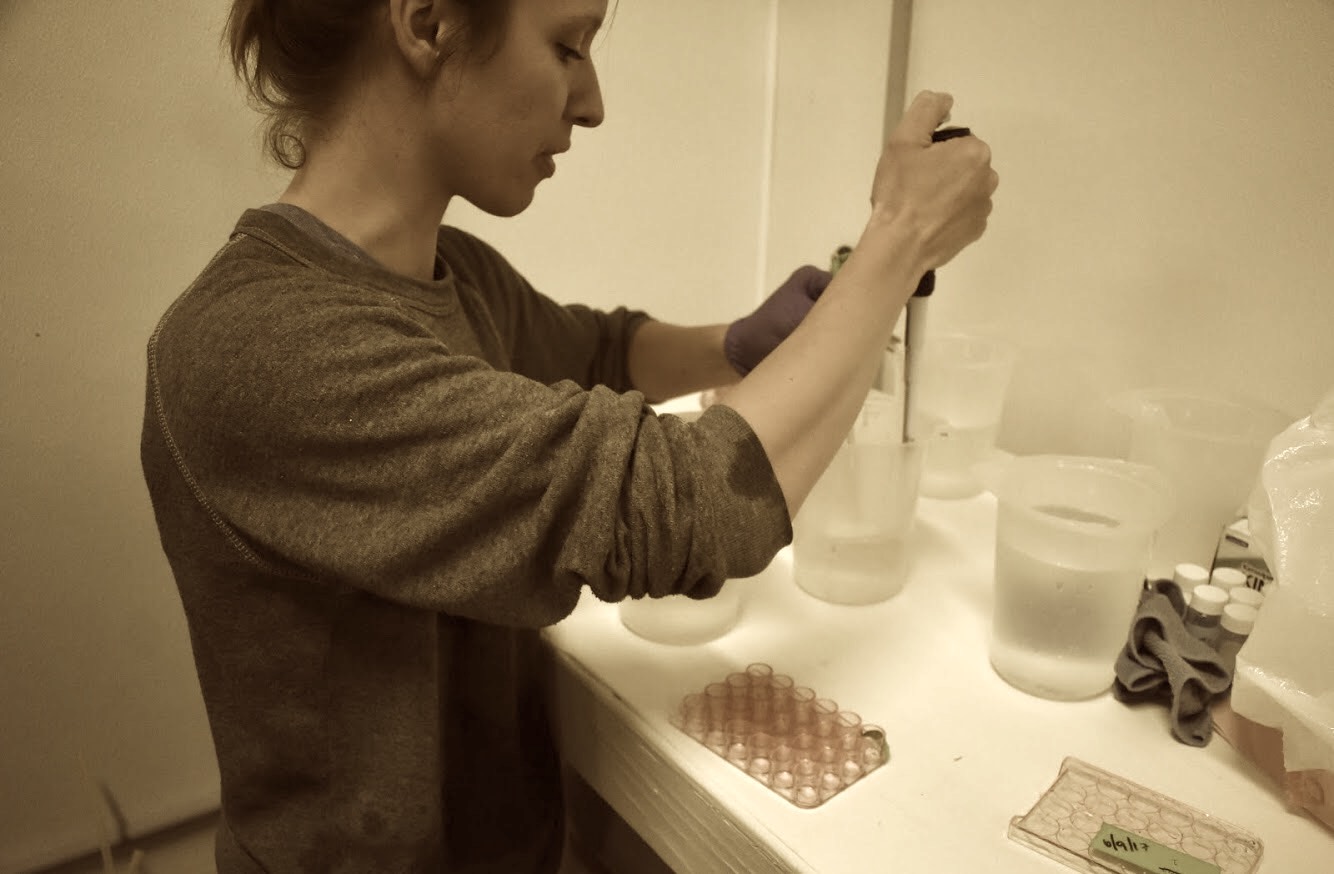Lab Day 6 - Desalting
The finale: a day of desalting
Our last day in the lab was spent desalting our samples. This involved preparing columns, and washing a series of solvents through the columns to remove salts and retain the peptides. As usual, we followed the protocol listed on LabDocs repo, with very few tweaks. Here’s what happened:
Reagents required: Luck us, Rhonda prepared plenty Solvent A, B, & Final for us to use. They are OK to be stored on the lab bench.
- Solvent A = 60% acetonitrile + 0.1% trifluoroacetic acid (300ul/sample)
- Solvent B = 5% acetonitrile + 0.1% trifluoroacetic acid (500ul/sample)
- Final Solvent = 3% acetonitrile + 0.1% formic acid (100ul/sample)
Other supplies needed: - Macrospin columns; 2 columns per sample
- Centrifuge tubes; 2 tubes per sample
Procedure:
-
Step 0: Returned the GBlank sample to the speed-vac to evaporate to near dryness. Evaporated @ 4degC from 9:30am-2:00pm, at which point I got the sample caught up with the others via the below steps.
-
Step 1: Grabbed “G#-D” samples out of freezer, allowed to thaw.
- Step 2: Labeled 2 sets of macrospin columns and 2 sets of centrifuge tubes:
- Macrospin columns & collection tubes for collection solvent and salts, to be discarded @ end of day: G#-E
- Macrospin columns & collection tubes for final peptide collection: G#-F
- Centrifuge columns & collection tubes for “just in case” Solvent-A collection: G#-E-1
- Centrifuge tubes for “just in case” Solvent-B collection: G#-E-2
- Step 3: Reconstituted samples in 100 µl solvent B. Need sample solution =< pH2. If too basic, added 10-20 µl increments of 10% formic acid and tested by applying 2ul sample to pH test strip); I began by testing one sample, but got worried that I was taking too much out of it, so moved on to test three other samples. In the end, I added 170 ul to each sample and confirmed pH<2 for all samples.
pH test strips after adding 170ul to all samples:
-
Step 4: Washed column: Added 200 µl solvent A to columns, spun for 3 mins @ 2000 rpm, repeating 3 times for a total of 4 times. Discarded remaining liquid everyother time to accomodate room for next round.
-
Step 5: Equilibrated column: Added 200 µl solvent B to columns, spun for 3 mins @ 2000 rpm, repeating 2 times for a total of 3 times. Discarded remaining liquid everyother time to accomodate room for next round.
-
Step 6: Loaded protein on column: Added all digested sample to columns (30 ug protein in 100 uL). Spun for 3 mins @ 3000 rpm. Collected flow-through, put back on column and spun again. Peptides are now in the columns. Transferred the remaining liquid to new tubes labeled G#-E-1 (just in case) and store at -80C.
-
Step 7: Wash salts through column: Wash columns with 200 µl solvent B, spinning at 3000 rpm for 3 minutes, repeating twice for a total of 3 times. Saved remaining liquid at the bottom of each tube by transferring it to a new tubes labeled G#-E-2 (just in case) and stored at -80C
-
Step 8: Eluted peptides: Transferred columns to clean collection tubes labeled G#-F . Added 100 µl solvent A, spun for 3 mins @ 3000 rpm, repeating once for a total of 2 times. Good warning: The peptides are now in the liquid- do not discard!
-
Step 9: Took samples on wet ice to Genome Sciences to use speed-vac. Evaporated samples to near dryness at 8C in speed vac. This took 2.5hrs. Note that while the original protocol called for 4C, the temp was set at 8C by another user so we evapped at 8C. The temperature at this point is not as crucial, however it is best to evap at a temp close to 4C to minimize degrdation.
-
Step 10: Reconstitute peptides in 60 µl final solvent. Light vortex and centrifuge down. Store at -80°C. Note: We reduced the amount of solvent used to reconstitute the peptides from 100ul to 60ul, since we only pulled 30ug protein per sample. Therefore, instead of 1ug/ul, our resulting peptide concentration should be 0.5ug/ul.

